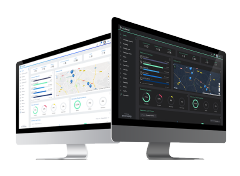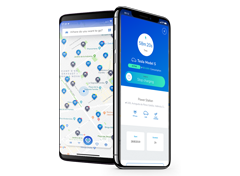
Energy saving tips
Sustainability | EnvironmentTo increase your energy efficiency we bring you some energy saving tips and some ways to save electricity to take care of the environment!
Saving energy is not only important to reduce the cost of our bill but above all to promote sustainability and take care of the environment. It's about adopting new habits and being constant to increase our energy efficiency.
Every action, however small it may seem, has an impact on our planet, and only each of us in particular has the ability to reduce this impact.
For this reason, we show you 15 energy saving tips that will help you save more than you imagine. It’s not necessary applying them all from the beginning, you can start with the simplest ones and, as you acquire the routine, you’ll want to add new habits.
The effort is worth it!
1. Install renewable energies
Renewable energies (such as solar thermal, photovoltaic solar, wind energy, etc.) will not only help you reduce your consumption, but also make your home more energy efficient.
2. Make the most of natural light
Whenever we can, it’s better to get profit of natural light, which nature offers us totally for free. Our bill and the environment will be grateful for it :)
And when you have to turn on lights, don't forget to turn them off whenever you leave any room.
3. Fit the power of your home
The contracted power supposes a good part of your bill, so it’s essential to check if we have the option to reduce the power without being affected, that is, without the fuses constantly skipping.
4. Consider an off-peak tariff
Getting an off-peak rate with time discrimination can allow you to save almost € 100 per year if a large part of your consumption fits in the valley hours (it varies depending on the country and the energy company, but it usually runs from 12:30am to 7:30am).
5. Schedule your appliances
It will be a great saving to schedule your electrical appliances (such as dishwasher, washing machine...) so that they start up during the reduced rate hours you have contracted at home, either in the morning or at night.
6. Disconnect devices
Even if the microwave, television and computer are turned off, in standby or not being used, if they are still plugged in, they will continue consuming electricity. This phantom consumption can mean more than 10% of the total home energy expense.
You can choose to disconnect them whenever you don’t use them and you can even install plugs that disconnect them automatically or bet on strips, which are cheaper.
7. Prioritize the dishwasher
Yes, the dishwasher consumes much less than washing the dishes by hand. A dishwasher cycle is equivalent to a 1kW consumption compared to 4kW if we do it by hand, in addition to spending about 10 liters of water for every minute we have the tap open.
Therefore, using the dishwasher allows a 40% energy saving.
8. Cover the frying pan when cooking
Covering our pans, we achieve the ingredients cooking faster, so we reduce the cooking time and the energy consumed.
And if we also aim for pressure cookers, we’ll reduce electricity consumption by around 80%.
9. Optimize your appliances
Optimize the performance of each and every one of your electrical appliances by following these tips:
Wash your clothes with low temperature programs, at a maximum of 30ºC. Did you know that more than 80% of the energy consumed by your washing machine is focused on heating the water? Use it only when you can fill it or use short washing programs and avoid prewash cycles, which consume even more.
In the dishwasher, aim for the eco programs and use it when is completely full or with a short wash cycle.
Regulate the temperature of the fridge and freezer, which must be located, on the one hand, between 5ºC and 7ºC and, on the other hand, at -18ºC.
Set the water heater temperature to a maximum of 40 degrees, since by default it’s usually set at 60º.
10. Optimize the iron
Although it may not seem like this, it’s one of the devices we have at home that consumes the most. Use the iron whenever you accumulate clothes and avoid using it only for a single piece of clothing.
This will save energy since the highest consumption occurs when it’s plugged in since it needs a lot of energy to heat up.
And to do it even more efficiently, first iron those clothes that require low temperatures, continue with those that needs the highest temperatures and finish with the last pieces turning off the iron and taking profit of its residual heat.
11. Regulates heating and air conditioning
The ideal temperature in our home in winter is between 19ºC and 21ºC during the day and 15ºC and 17ºC during the night. In summer, however, it’s between 24ºC and 26ºC.
Did you know that raising or lowering only a thermostat degree can increase your energy consumption by 7%? The best option is to have digital and programmable thermostats by zones or by each of the rooms to avoid unnecessary consumptions.
12. Take advantage of the residual heat
The last 5 or 10 minutes before finishing our cooking, we can turn off the oven or the ceramic stove to take advantage of the residual heat they generate and thus finish cooking our dishes.
And if it’s induction or gas cooking, we can also apply the same trick, covering the frying pan or the pot so that the food finish cooking thanks to its own heat.
13. Use energy saving light bulbs
Replace incandescent and halogens ones with energy saving light bulbs or LEDs, which consume about 85% less energy and have a much longer life.
14. Buy class A+++ electrical appliances
Any appliance A+++ class is much more efficient and consume much less energy compared to another lower class model, either A, B, C or D. The energy label A+++ guarantees us considerable savings on our electricity bills.
15. Ensures good windows insulations
Ensuring that both doors and windows close well will prevent us from losing an important part of energy (either in heat or cold format depending on the season). By installing sealing strips, silicone or putty we can avoid a loss about 20% of energy.
Other ways to save electricity
C lichés and typical, but true and very useful:
Take a shower instead of taking a bath.
Do not leave the tap open if it’s not 100% necessary.
Don’t keep the fridge and the freezer opened unnecessarily.
Keep electrical appliances in good conditions.
Don’t open the oven during its use if it’s not essential.
Use sustainable mobility alternatives (public transport, electric vehicle, bicycle, electric scooter...).
Avoid using dryers and dry clothes outdoors whenever it’s possible.
Defrost food in the fridge and avoid using the microwave.
💙 And how Place to Plug contributes to the environment and sustainability?
By empowering you to use electric vehicles offering an end to end solution for the entire EV charging industry, whether if you are an EV driver, a business or an institution!


Leave a comment